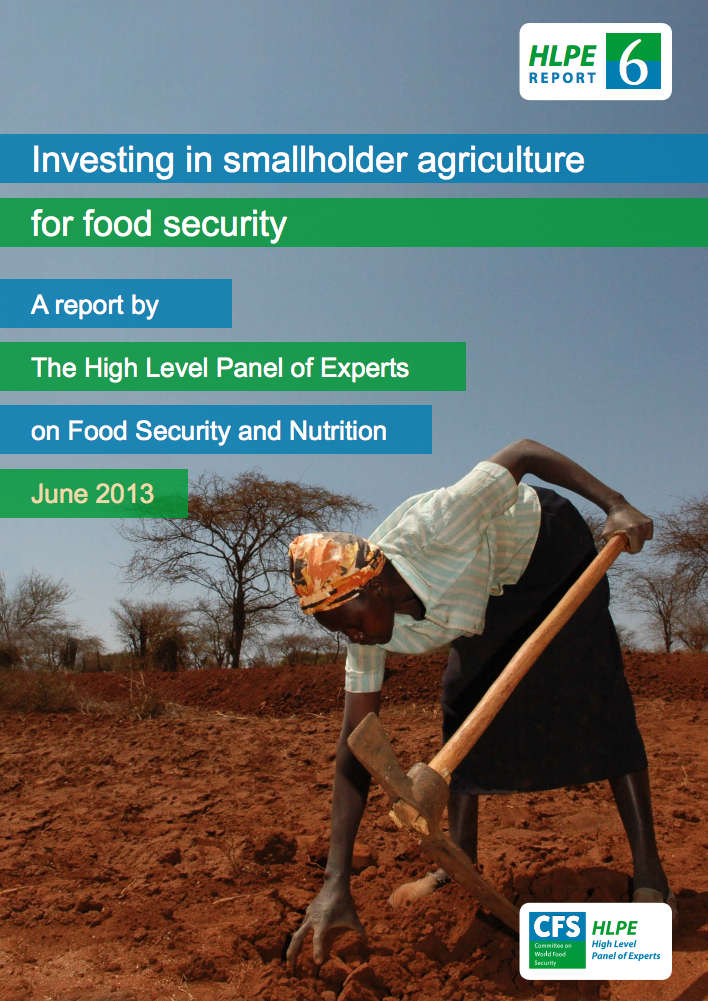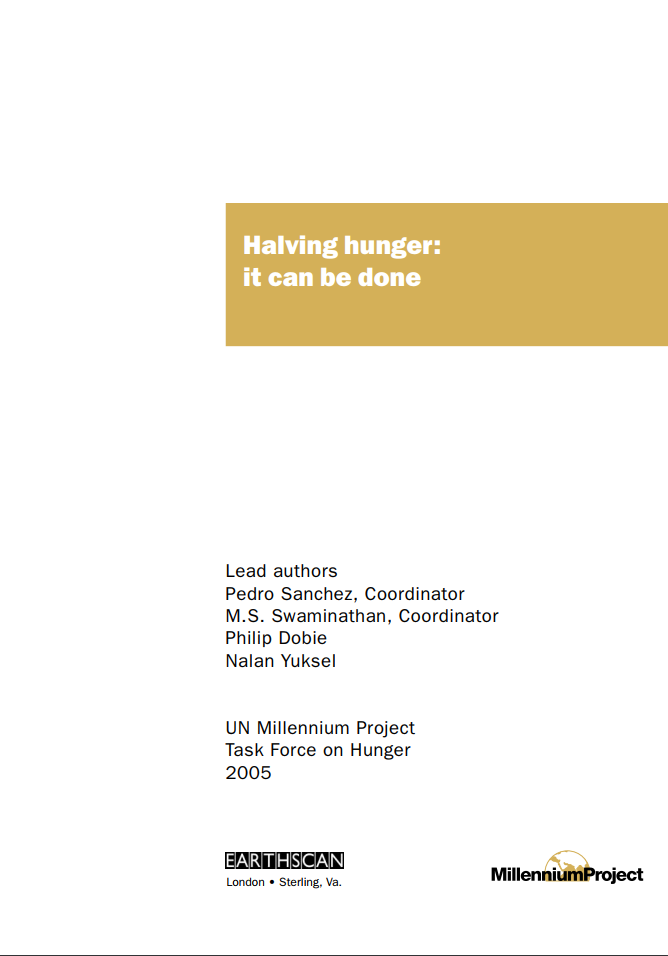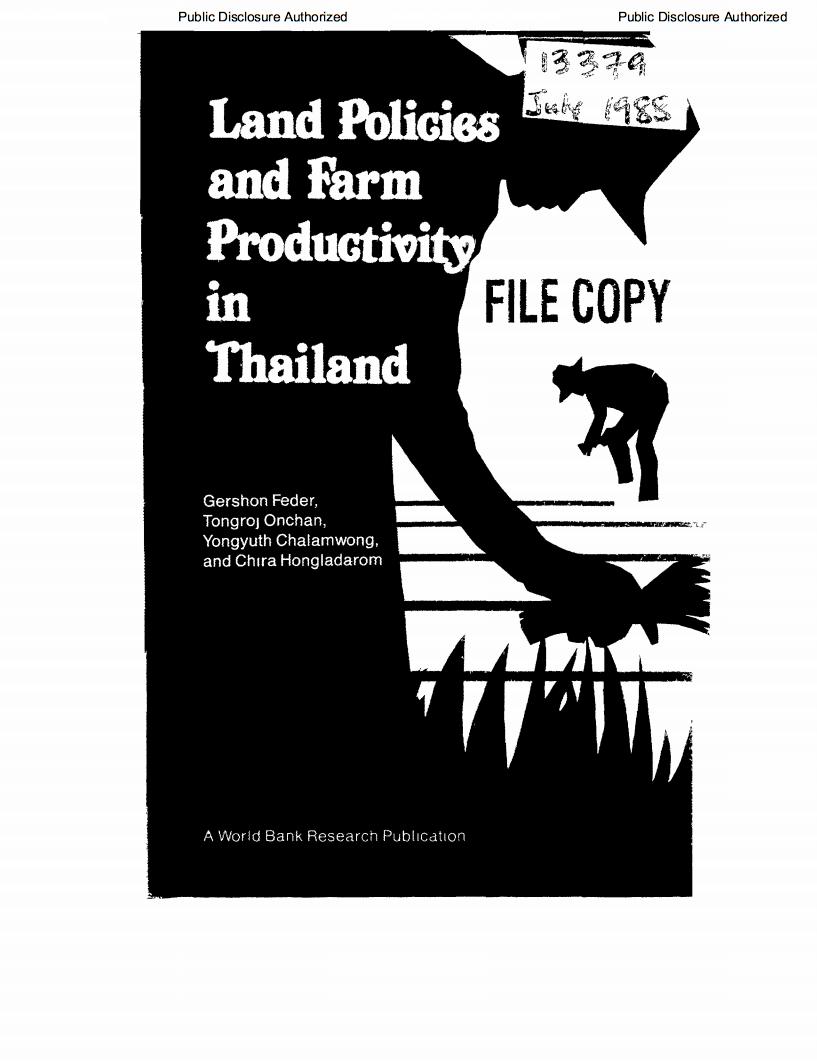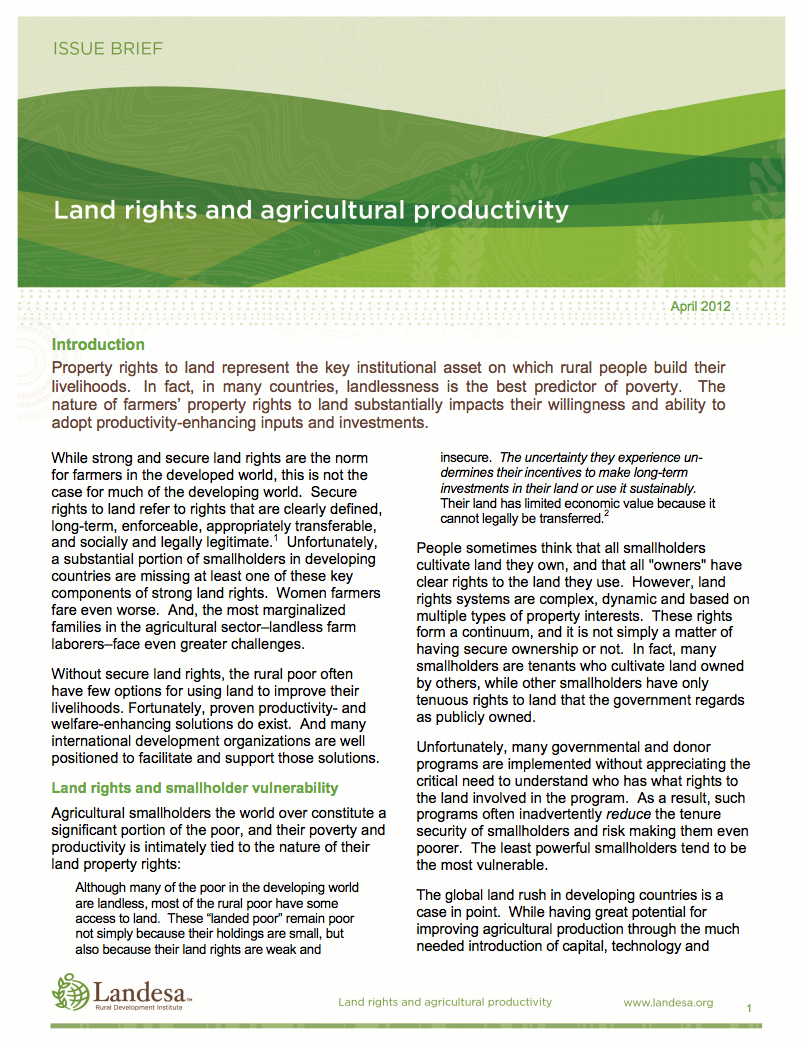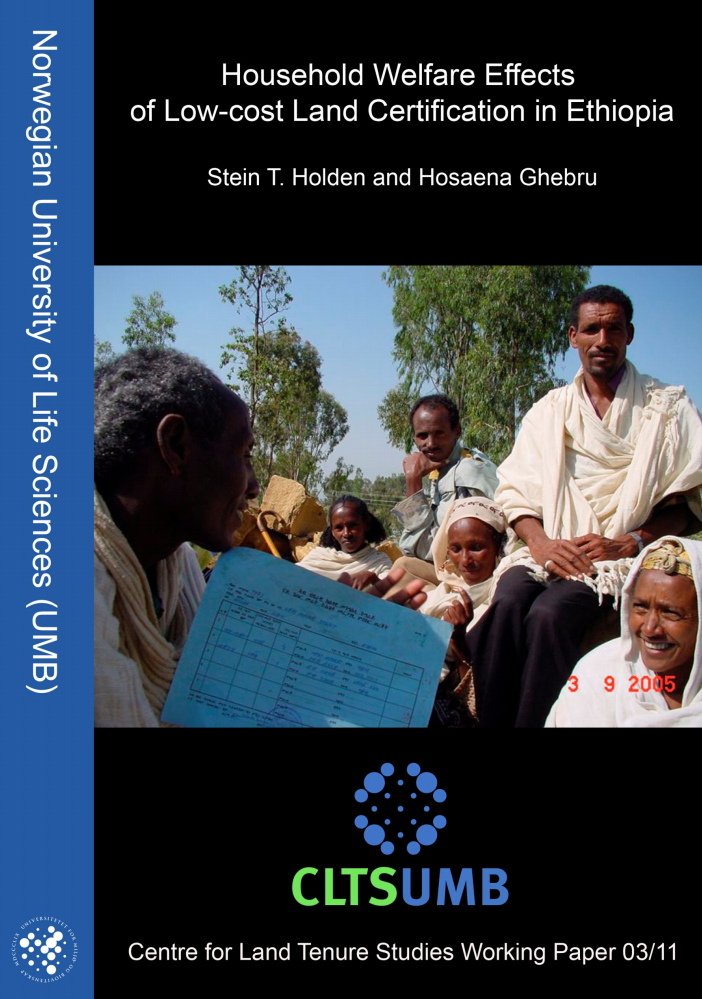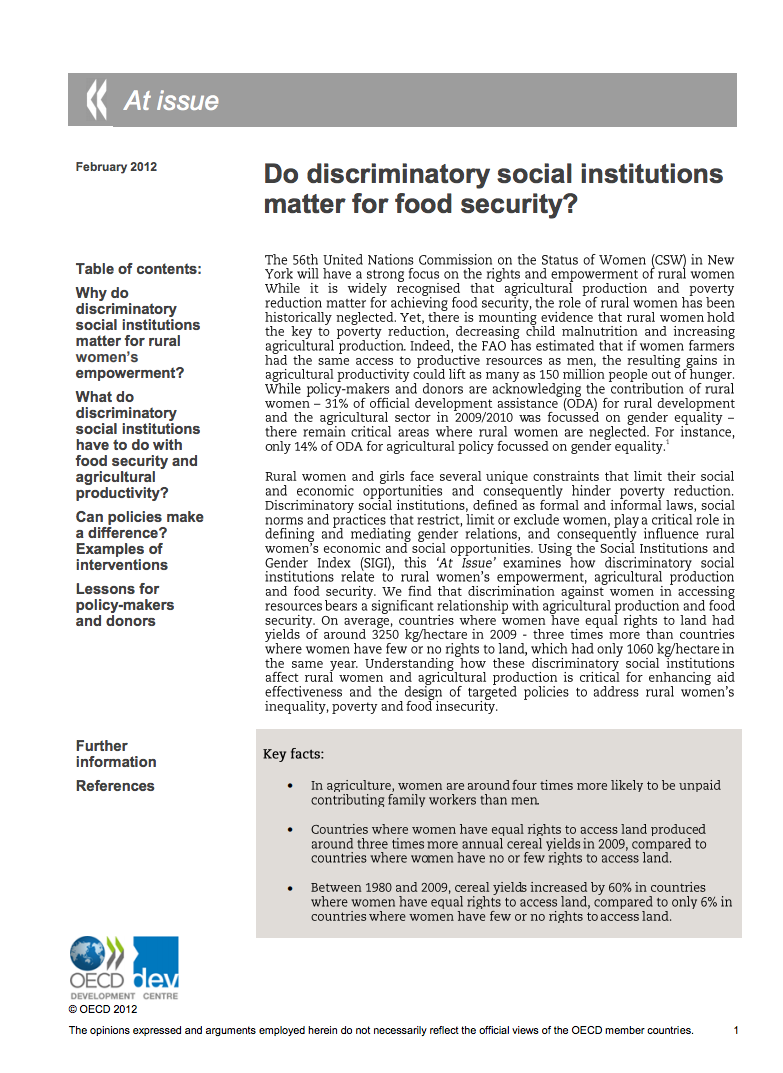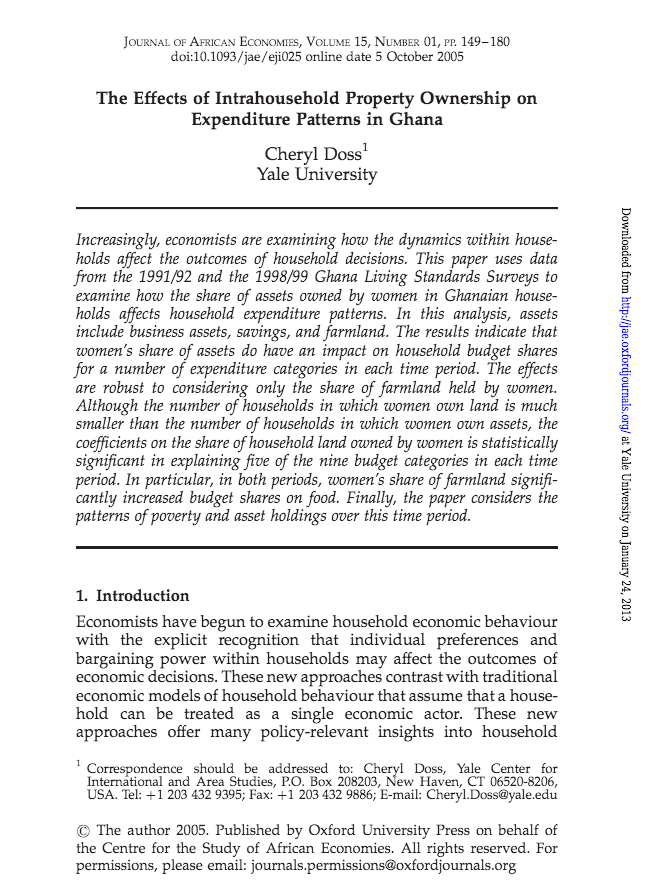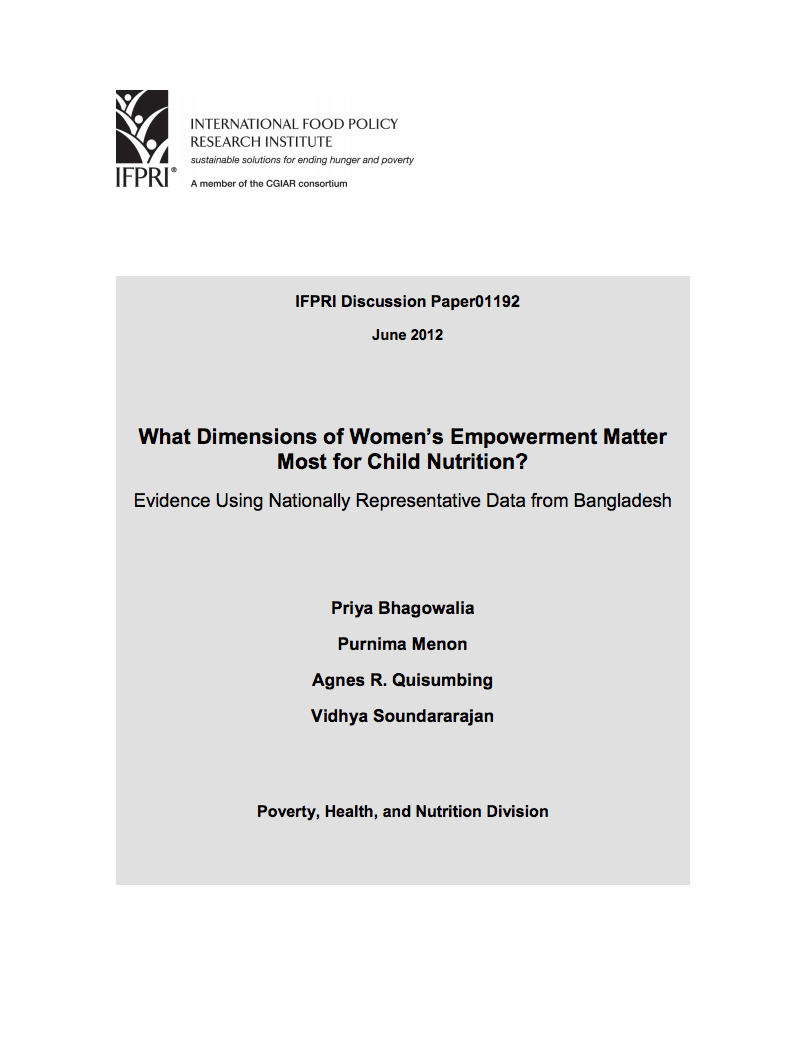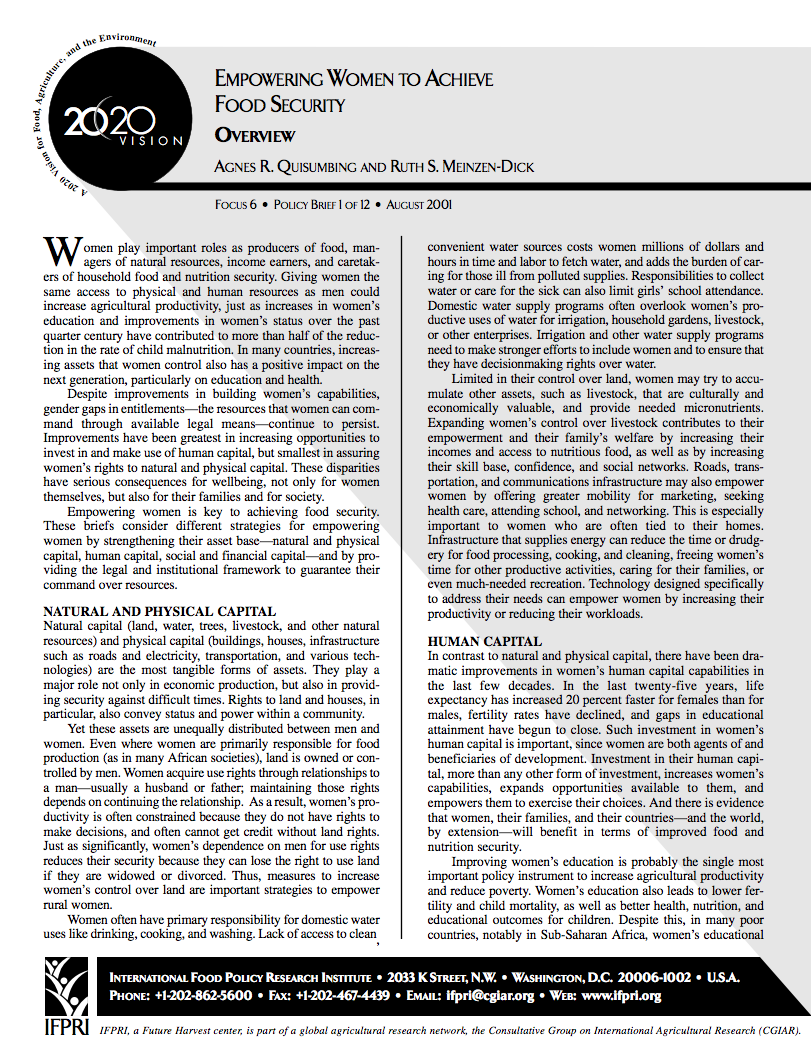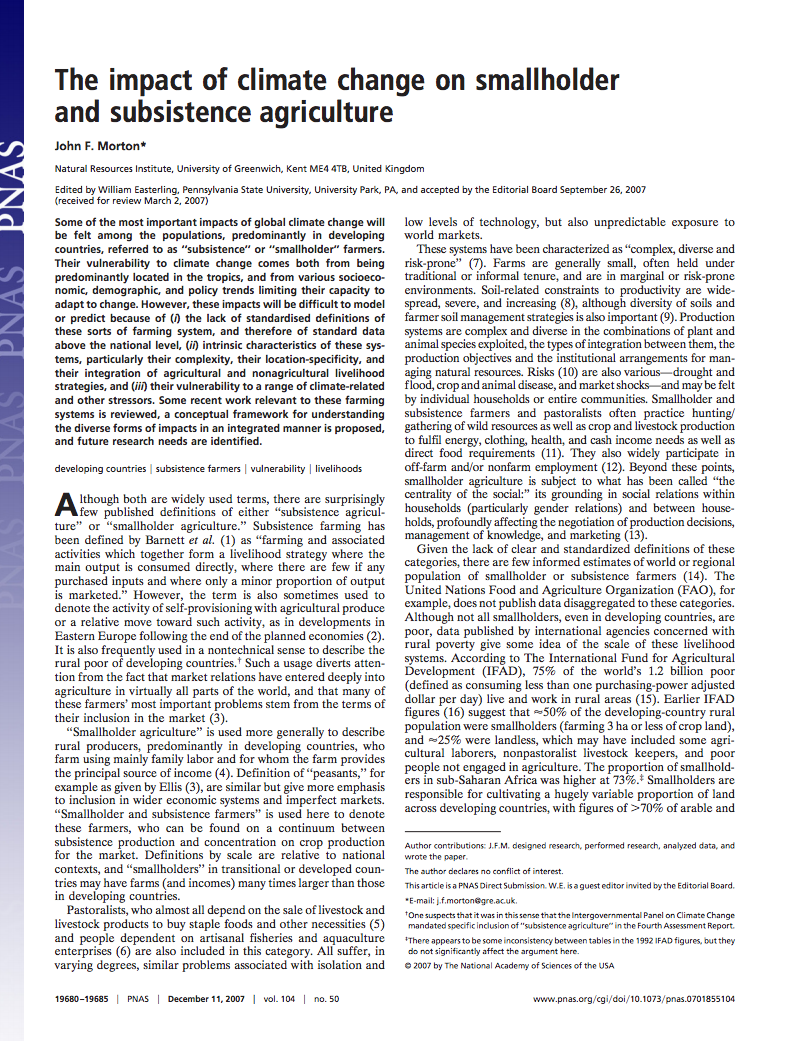Investing in Smallholder Agriculture for Food Security
In October 2011, the Committee on World Food Security (CFS) requested the High Level Panel of Experts (HLPE) to prepare "a comparative study of constraints to smallholder investment in agriculture in different contexts with policy options for addressing these constraints, taking into consideration the work done on this topic by IFAD, and by FAO in the context of COAG, and the work of other key partners.

